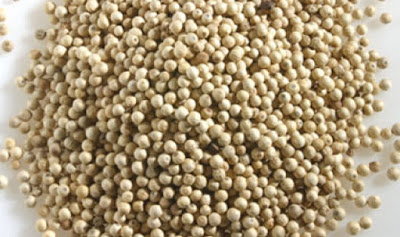According
statistics of the Vietnam Pepper Association/Customs, by the end of
October 2019, Vietnam exported 254,583 tons, including 228,233 tons
black pepper and 26,350 tons of white pepper, total export turnover
reached 644.1 million USD.
Compared
to the same period in 2018, exports increased by 21.1% in volume to
44,302 tons, but decreased value by 7.0% equivalent to 48.7 million USD.
The average export price of black pepper in the first 10 months of 2019
reached 2,473 USD/ton, white pepper reached 3,019 USD/ton.
The
export price of black pepper decreased by 662$/ton and white pepper
decreased by 1,556/ton compare with the same period 2018.
China
is still the largest import market of Vietnam Pepper in the first 10
months, reached 54,649 tons, up 22,991 tons, roughly 21.46% of Vietnam
Pepper. However, in the last 2 months is only around 800 tons due to
border trade continue is still stuck and increased a lots cost when clear customs.
We foreseen this situation more difficult and maybe China customer have
to official buying pepper pay full tax from Vietnam. This may also keep
pepper prices stable/up or down not much and less volatile sudden as
before.
The
second largest is USA was 43,102 tons, an increase of 5,034 tons,
accounted for 16.9%. Followed by Indian markets imported 17,785 tons,
down 72 tons; Germany imported 9,605 tons, up 2,567 tons; Arabs imported
9,478 tons, up 912 tons.
Market
is still moving very steady and firm from last week. The main reason
were due to exporters big short for Light Berries to extra oil (density
from 280 – 300gr/l) while Vietnam Light Berries in this year very less
than usual. Nepal and other Asia countries also buying December/Jan
shipment beside China covering few boxes white pepper. However, USA/EU
quiet at our side and asking big discount for first half 2020 shipment.

WHATSAPP +5511988027709
MAIL manager@peppertrade.com.br
TWITTER : https://twitter.com/peppertrade

WHATSAPP +5511988027709
MAIL manager@peppertrade.com.br
TWITTER : https://twitter.com/peppertrade
























